The following analysis of the Big Island real estate market is provided by Windermere Real Estate Chief Economist Matthew Gardner. We hope that this information may assist you with making better-informed real estate decisions. For further information about the housing market in your area, please don’t hesitate to contact your Windermere agent.
ECONOMIC OVERVIEW
COVID-19 continues to significantly impact employment on the Big Island, causing the loss of 13,000 jobs between February and September. That said, although it really is no consolation, employment has risen by 900 jobs from the low in May. The mandatory 14-day self-quarantine proclamation introduced by Governor Inge has been replaced with a pre-travel testing option. Hopefully, this will lead to increased tourism, which is the backbone of the Big Island’s economy. The unemployment rate on the island hit a high of 23.4% in April. It has dropped to the current rate of 13.6%, which is still quite high. I would also note that the rate would have been higher had the island not seen a significant reduction in the labor force. All of the Hawaiian Islands are suffering, but a bottom in employment has been reached. That said, it will be a long slog to get back to the employment levels of early spring.
HOME SALES
❱ In the third quarter of 2020, 890 homes sold on the Big Island, an increase of 6.7% compared to the third quarter of 2019, and a significant 52.9% higher than in the second quarter of 2020.
❱ Sales were higher in six markets, were static on one, and fell in two. Kau, South Kona, and North Kohala all saw significant increases in sales and the markets where sales were lower only experienced small losses on an absolute basis.
❱ The growth in sales came even as inventory levels dropped 24.2% from a year ago. The average number of homes for sale in the quarter was also down 15.7% from the second quarter of 2020.
❱ Pending home sales jumped 49.3% from the second quarter, suggesting that closed sales will be positive in the final quarter of the year.
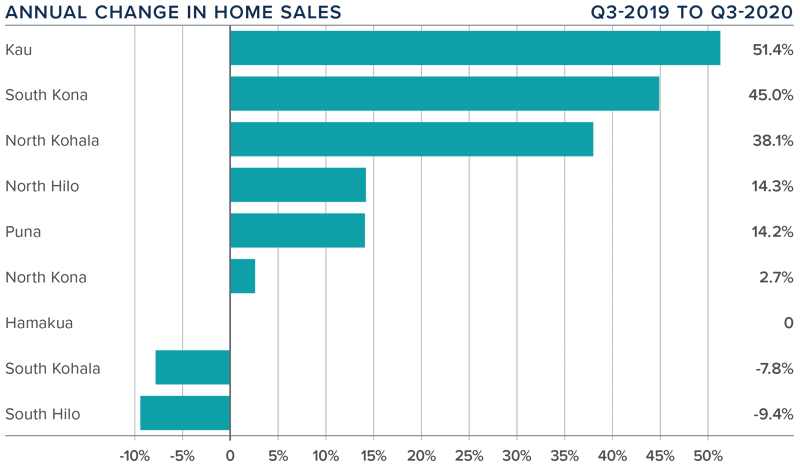
HOME PRICES
❱ The average home price on the island rose an impressive 8.1% year over year to $629,751. Prices were also 8.8% higher than in the second quarter of 2020.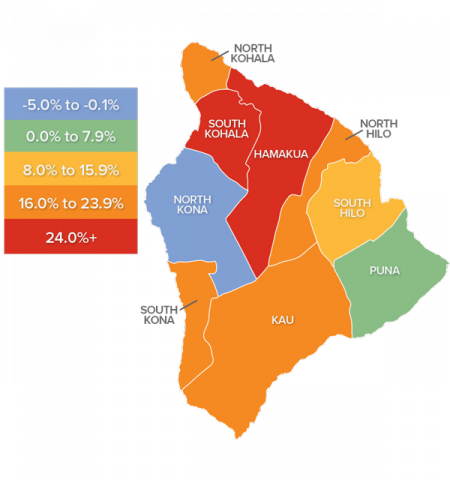
❱ Affordability remains an issue, but there appears to be demand from locals as well as mainlanders. Buyers have dipped their toes back into the market. This is likely due to very competitive mortgage rates, as well as people seeking out alternatives to traditional hotel or rental home vacations and choosing to buy instead.
❱ Prices rose in every market other than North Kona. Appreciation was strongest in the Hamakua market area. In areas that saw market growth, all but one of them experienced double-digit increases.
❱ The market has improved, and I am hopeful this will continue with the easing of travel restrictions.
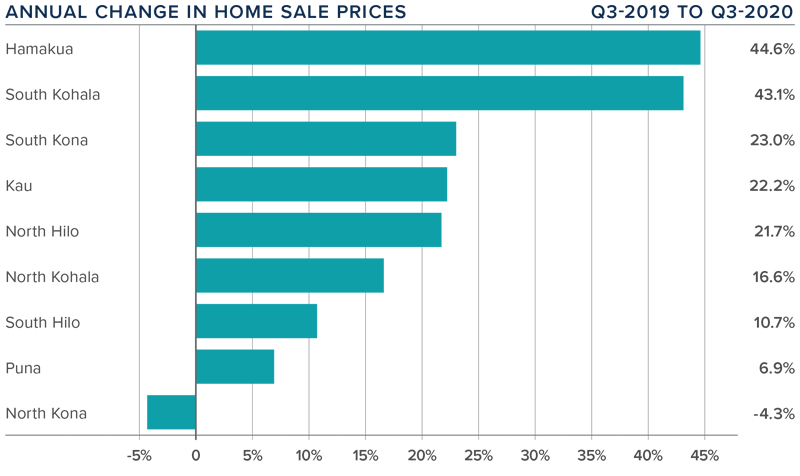
DAYS ON MARKET
❱ The average time it took to sell a home on the Big Island dropped eight days compared to the third quarter of 2019.
❱ The amount of time it took to sell a home dropped in North Hilo, North Kohala, and Kau, but rose in all other markets.
❱ In the third quarter, it took an average of 106 days to sell a home. Homes sold fastest in North Kona and slowest in Kau.
❱ It took 14 fewer days to sell a home in the third quarter than in the second quarter of this year.
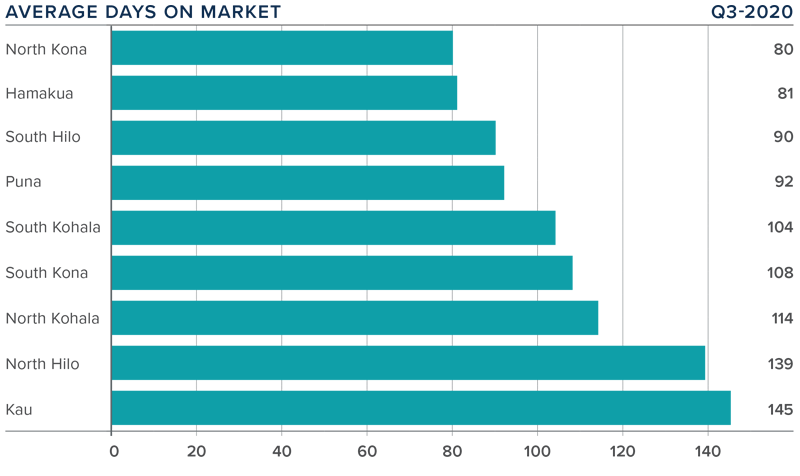
CONCLUSIONS
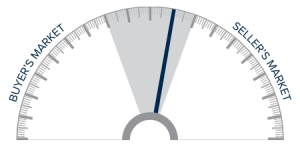 This speedometer reflects the state of the region’s real estate market using housing inventory, price gains, home sales, interest rates, and larger economic factors.
This speedometer reflects the state of the region’s real estate market using housing inventory, price gains, home sales, interest rates, and larger economic factors.
Unsurprisingly, the island is still impacted by the influence of COVID-19. Demand has improved and I remain hopeful that lowered travel restrictions will allow Island sales to continue to improve.
Increased demand and a low supply of homes for sale has allowed prices to rise at a very decent pace. As such, I am moving the needle back a little more in favor of home sellers.
ABOUT MATTHEW GARDNER
 As Chief Economist for Windermere Real Estate, Matthew Gardner is responsible for analyzing and interpreting economic data and its impact on the real estate market on both a local and national level. Matthew has over 30 years of professional experience both in the U.S. and U.K.
As Chief Economist for Windermere Real Estate, Matthew Gardner is responsible for analyzing and interpreting economic data and its impact on the real estate market on both a local and national level. Matthew has over 30 years of professional experience both in the U.S. and U.K.
In addition to his day-to-day responsibilities, Matthew sits on the Washington State Governors Council of Economic Advisors; chairs the Board of Trustees at the Washington Center for Real Estate Research at the University of Washington; and is an Advisory Board Member at the Runstad Center for Real Estate Studies at the University of Washington where he also lectures in real estate economics.
 Facebook
Facebook
 X
X
 Pinterest
Pinterest
 Copy Link
Copy Link



